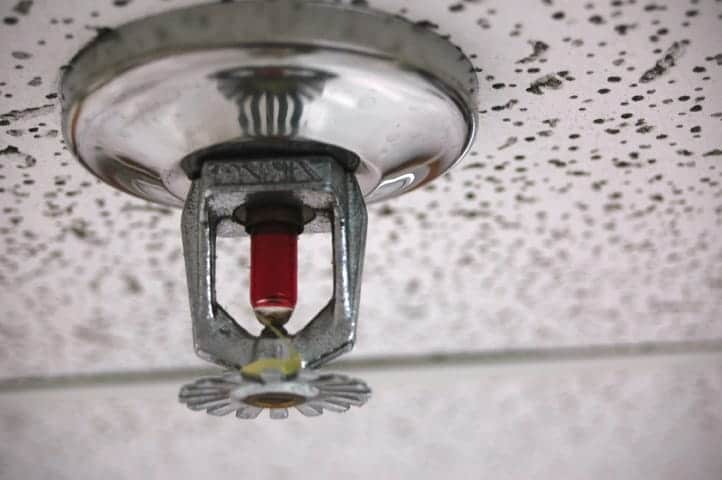Fire Sprinkler Systems
A fire sprinkler system is an active fire protection method, consisting of a water supply system, providing adequate pressure and flow-rate to a water distribution piping system, in which fire sprinkler heads are connected. Fire sprinkler systems are extensively used worldwide, with over 40 million sprinkler heads fitted each year in both commercial buildings and residential settings. Inspecting and maintaining sprinkler systems is very critical to ensure the proper functionality of the system. Depending on the type of facility and system, inspections are required to occur quarterly, semi-annually, or annually.
WFX can provide inspections, maintenance and repairs on the following systems:
Wet Pipe Sprinkler System
These systems are by a wide margin installed more often than all other types of fire sprinkler systems. They are very reliable and simple, with the only operating components being the automatic sprinklers and (commonly but not always) the alarm check valve. This system is connected to the water supply so water will discharge immediately from the sprinkler heads once the heat from a fire has reached them.
Dry Pipe Sprinkler System
Dry pipe systems are the second most common sprinkler system type. This sprinkler system is mostly used in unheated buildings or parking garages where the ambient temperature may be cold enough to freeze the water in a wet pipe system, which would make the system inoperable. The piping is filled with air or nitrogen under pressure. The release of the air allows the flow of water to open sprinkler heads.
Deluge Sprinkler System
It is a system where all sprinklers are connected to the water piping system and are open. However, the heat-sensing operating element is removed, or specifically designed as such. These systems are used for specialized hazards where rapid fire spread is an elevated concern, as deluge systems provide a simultaneous application of water over the entire hazard area. These systems are typically installed in personnel egress paths or building openings to slow travel of fire.
Water is not present in the piping until the system operates and the valve opens discharging water from all sprinklers attached to the system. To prevent the water supply pressure from forcing water into the piping a “deluge valve” is used in the water supply connection. This is a mechanically latched valve that is a non-resetting valve and stays open once it is tripped. The deluge valve must be opened as signaled by a connected fire alarm system. The initiation device (pilot sprinklers, smoke detectors, heat detectors, or optical flame detectors) signals the fire alarm panel, which signals the deluge valve to open. Activation can also be manual, which usually happens via an electronic or pneumatic fire alarm pull station.
Pre-Action Systems
This system is used for specialized locations that do not want to have water discharge. The typical locations for pre-action systems are museums, data centers, and other locations where accidental activation would be especially undesirable. Pre-Action systems are hybrids of wet, dry, and deluge systems, depending on your needs. There are two main sub-types of pre-action systems.
Call WFX today at 855.WFX.1978 or fill out the form below for all your Fire Sprinkler System needs.
"*" indicates required fields
Contact Us for a Free Estimate
Please provide us with your personalized estimate details; we will respond within 24 hours!
At WFX Fire, Lock & Security, we deliver high-quality solutions for all your fire, lock, and security needs. Whether you have questions, need a quote, or require support for your current systems, our team is here to assist you every step of the way.

